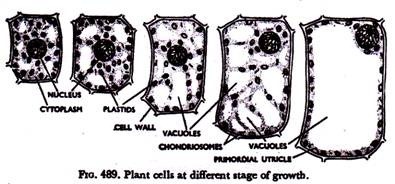In this article we will discuss about the structure of gastric mucosa.
The gastric mucosa is normally covered by a thick layer of mucous. Once this layer is removed, one can make out a number of pores known as gastric pits. Each pit is the out let for 3-7 gastric glands (Fig. 5.10).
The gastric glands are tubular glands which extend from the pit up to the muscularis mucosa. Each gland has got isthmus, neck, body and base. The characters of the gastric glands vary from the cardiac to the body and fundus and in the pyloric regions. They have five different types of cells.
i. Mucous neck cells:
Secrete soluble mucin whereas the mucous cells lining the surface of the stomach which are derived from mucous neck cells secrete insoluble or visible mucin. This visible mucin is the one that coats the inner surface of stomach. The mucous cells also secrete bicarbonates. The mucous secretion is alkaline.
ii. Chief/peptic/zymogen cells:
These secrete the enzymes of gastric juice, most important of which is pepsiongen. So these cells have Golgi apparatus, mitochondria and endodplasmic reticulum, all of which are responsible for protein synthesis.
iii. Parietal or oxyntic cells:
Located in the side walls of the gland. These cells secrete HC1 and intrinsic factor of Castle. These parietal cells have got well- developed intracellular canaliculi, tubulovesicular system and a large number of mitochondria. Their secretion gets into the lumen of the gland by flowing in between the chief cells. The presence of canaliculi and other structures are meant for secretion of HCl.
iv. The G cells present in the pyloric antral region secrete gastrin, one of the important hormones of GI tract with few important actions.
v. Undifferentiated cells:
These are believed to be undifferentiated and are believed to be the precursors of the parents of parietal cells, chief cells and enteroendocrine cells.
Gastric glands of cardiac region are shorter and are predominantly mucous cells.
In the pyloric region, again the mucous cells predominate. There are very few chief and parietal cells in the above regions.
